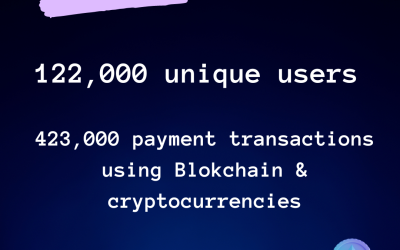
Real-time payments allow the transfer of funds between payer and payee within seconds, providing immediate settlement. The recipient has immediate access to the full amount of the fund transfer without any holds or limitations on use – what’s more, transfers are also irrevocable, meaning they cannot be rescinded by the sender once received. Sending and receiving payments along a real-time payments rail automates and simplifies the process of transferring funds, with perhaps the most significant gain over traditional fund transfer mechanisms being the elimination of fund clearing windows. As well as providing near-instantaneous fund transfers, real-time payments rails allow merchants to send requests for payment, and have payment returned with immediate settlement. This works well for recurring and one-time bills, subscriptions, and one-time payments from vendors, partners, and consumers. The real-time payments network empowers consumers and businesses to move money immediately at any time of day, removing the restrictions of clearing and processing windows. In this article, we discuss the benefits of real-time payments for e-commerce businesses and how they are helping to overcome some of the shortfalls of traditional payment methods.
The Benefits of Incorporating Real-Time Payments
As shopping and banking experiences become increasingly digital, consumers are inclining towards faster and contactless digital solutions. Payment providers that value consumers’ time by prioritizing speed, convenience, and accessibility, are likely to win over younger demographics who increasingly shop and bank using mobile devices and expect seamless user experiences. Incorporating real-time payments into your payments infrastructure helps to improve the customer experience by meeting increasing demand for instant payment acceptance and delivery, enhancing satisfaction and brand loyalty. Without real-time payments, customer card payments may take days to clear and reach the merchant, or a peer at the receiving end of a bank transfer – instant payments then remove friction and close the gaps between companies, customers, and employees.
Continuous, ‘always-on’ payments that can be used even on weekends and bank holidays are a huge step up in terms of convenience. As real-time payments are not restricted by processing times, this gives users more control over payment timing, with the ability to make and receive payments 24 hours a day. Real-time payments transactions occur immediately, meaning payments can be delivered just in time without any loss of float revenue. Real-time payment infrastructure is already being used in high volumes of low-value consumer payments to merchants in the UK, China, Brazil, and India. This change in preferences is reflective of a correlated shift in the US payments ecosystem, with a growing appetite for increased speed, more choice, and simple ways to send and receive payments. There are a number of use cases for real-time payments that exemplify the benefits of the system. As payments are instant and use real-time account information, customers can pay for utilities in full or in installments using up-to-the-minute account balance information. As the exchange of information is conducted in seconds rather than the usual 1 to 2 days as in standard ACH transactions or check transactions, urgent payments can be delivered to customers (such as in the case of insurance claims), and recurring monthly payments can be more easily managed.
How Real-Time Payments Alleviate Pain-Points for e-Commerce
In this “ new era of instancy”, digital experiences without instant payments are likely to fall short of high customer expectations, and put merchants at a disadvantage. The pandemic forced a change in how many vendors supply their products, and in how consumers browse and make purchases. In this landscape, consumers have become more comfortable with digital shopping experiences. This shift in the paradigm has led to more consumer demographics turning to online shopping channels, even for everyday items such as groceries. This shift towards digital payment methods has seen huge growth in mobile payments and e-wallet usage among younger consumers – and while e-wallet top-ups are driven by credit card payments, bank transfer channels are growing in popularity.
Real-time payments can be initiated through a number of channels – customers can easily pay for goods online using their phone, tablet, or laptop, and do so quickly and seamlessly. This means a reduction in payment redirects, and therefore abandoned carts – which will boost success rates for e-commerce businesses. Shoppers who choose direct payments are more likely to return to retailers for repeat practices, and merchants who provide easy and fast payment options are valued. Real-time payments can be seamlessly integrated into the online customers experience, with many shoppers choosing to make purchases while browsing social media or lifestyle apps. As well as expediting purchases, real-time payments eliminate the need for customers to enter extensive personal credentials – with many payment providers allowing users to log into their banking apps using biometric authentication. This removes the need for customers to enter unnecessary personal information onto e-commerce sites, and reduces the time taken to check out.
As well as improving the customer experience, iincorporating real-time payments can unlock a number of benefits for e-commerce merchants. Firstly, real-time payments offer enhanced liquidity management. Sending and receiving funds through clearing houses can mean that bank balances are out of date – whereas real-time payments offer instant settlement, with up-to-the-minute transaction history. This allows e-commerce businesses to retain closer oversight of revenue and makes it easier to track transactions and manage short-term commitments, such as paying vendors and suppliers. This improved revenue oversight allows e-commerce businesses to conduct more accurate and informed forecasting, which is especially important for smaller businesses that need to track cash flow closely. Real-time payments subsequently help e-commerce businesses to paint a clearer picture of their cash flow, reducing reliance on borrowing and empowering vendors to optimize the use of surplus revenue. Furthermore, real-time payments work to reduce risk and payment fraud. As payment settlement is instant, fund clearing windows, in which criminals may attempt to fraudulently reverse payments, are eliminated. This is especially important for e-retailers selling high-value items such as electronics, which would be costly to replace.
Real-Time Payments: The New Frontier for The Customer Experience
For years, credit cards, clearing houses, and checks have maintained a tight grip on the financial mainstream and dictated consumer and business payment preferences. With the proliferation of real-time payments, many of the drawbacks of traditional payment methods, such as lengthy fund clearing windows, are negated – giving customers and merchants alike more control over their finances and the ability to transact when and where it is convenient.






Comments are closed.